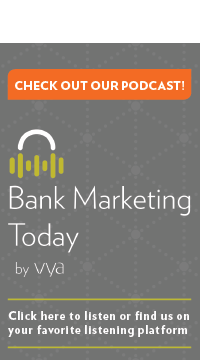 Getting consumers to talk about and share their positive experiences with your brand, product or service with other people is the Holy Grail of marketing. It’s called word-of-mouth (WOM), and it’s one of the oldest and most effective forms of marketing. It’s estimated that word of mouth drives $6 trillion in annual global spending and is responsible for as much as 19% of purchases.
Getting consumers to talk about and share their positive experiences with your brand, product or service with other people is the Holy Grail of marketing. It’s called word-of-mouth (WOM), and it’s one of the oldest and most effective forms of marketing. It’s estimated that word of mouth drives $6 trillion in annual global spending and is responsible for as much as 19% of purchases.
The power of word of mouth is undeniable. According to Nielsen, 88% of consumers trust recommendations from people they know more than any other channel. Word of mouth is highly trusted because it is typically delivered, without compensation, by someone the recipient knows fairly well, and therefore trust is a natural component of the recommendation.
It’s also highly targeted. Existing customers share information and recommendations with friends and acquaintances they know will actually benefit from the information – people with high buying potential.
While the value of word of mouth is universally understood, there’s an assumption that all word of mouth just happens, with no need for marketing. Organic word of mouth does indeed exist. However, even with a great product and exceptional customer experience, there is no guarantee a business will enjoy strong word of mouth without encouragement. For most businesses, if you are not engaged in marketing to drive word of mouth, you are undoubtedly missing out on significant opportunities to generate sales and grow your business.
As word-of-mouth marketing expert and New York Times-bestselling author of Talk Triggers: The Complete Guide to Creating Customers With Word of Mouth, Jay Baer explains, “If we just run a good business, people will notice and tell their friends. Incorrect. If you’re not different, or remarkable, or worthy of somebody telling a story, you will not create referrals.”
Baer says that if you want to make word of mouth work for your business, you have to give your customers a story. “The best organizations are purposefully crafting differentiators that get customers to tell authentic, visceral, trusted stories about the business and its products or services; stories that create new customers through referrals and recommendations.”
For distributed organizations like insurance businesses, franchises, banks and financial services, this means encouraging local agents, franchisees and bank branches to participate in your marketing programs that can enable them to truly capitalize on word of mouth.
A number of factors make it necessary to encourage word of mouth. Start with the fact that buyers are busy. Busy customers may need reminding to strike up a conversation about an insurance agency, a bank, or a franchise business. A one-time conversation with one of your loyal customers may not be enough to convert a prospective consumer to a new customer.
How do you galvanize a diverse and distributed group of brand promoters to support your marketing campaigns? Here are some ways you can encourage your local representatives to leverage your marketing assets and programs as they actively pursue word-of-mouth business.
Local marketing as conversation starter
Some experts say that to penetrate a buyer’s consciousness you have to contact the prospect a minimum of eight times. In this way, marketing can serve as the conversation starter for a local marketing word-of-mouth strategy. Building awareness over time with marketing can prime a prospect to be receptive to a word-of-mouth recommendation.
Visual cues can spark conversations, like a postcard that is sent to a radius of neighbors about your organization’s local community support or the services you’re providing to neighbors. Yard signs indicating your organization’s sponsorship of a local student, sports team, arts & culture event or other community activity can generate conversations in the neighborhood.
Printed marketing pieces, like print ads, flyers and door hangers can be used to promote special offers that inspire customers to share the opportunity with others, generating valuable word-of-mouth buzz.
Promotional products can also help provide publicly visible cues to trigger word of mouth. When selecting promotional products for generating word of mouth, choose items that are likely to be used, not only frequently, but also in publicly visible settings. Items like t-shirts and tote bags are effective in providing this kind of repeated public visibility that can prompt conversations.
Capitalize on the interplay of online and offline
A strong word-of-mouth strategy bridges the online and offline worlds. For example, direct mail can augment your digital strategy to reinforce messaging and word-of-mouth impact of online email and social media campaigns. Local agents and field marketing teams can ensure they are capturing the full power of word of mouth by:
Asking for referrals and reviews through email, direct mail, or in-store/office signage
Including refer-a-friend links on their website, via social media, or in email newsletters
Rewarding customers for referrals. Local representatives can build loyalty with existing customers while encouraging word of mouth by offering discounts, gifts, or other rewards in exchange for new customer referrals.
Foster a corps of active brand promoters
There are a number of ways distributed organizations can use automation and marketing resource management systems to help turn local brand advocates into active brand promoters who are engaged in your campaigns to drive word of mouth.
Proactively manage campaign participation.
Set up campaigns in a system so your brand promoters can easily enroll. Ideally, make it possible for them to enroll once for a multi-touch campaign. Use a system with participation dashboards so you can easily monitor who is engaged. Send automated email reminders to those who have not enrolled or actively participated to increase engagement. Look for a marketing resource management system that manages campaign automation and user enrollment for you. And remember to acknowledge good performance – email active brand promoters to thank them and make them feel valued for their participation.Incentivize campaign participation.
Encourage enrollment in your campaign with an incentive. For example, if you’re a franchisor whose brand promoters are franchisees who are required to pay for some of their marketing, a great incentive is free marketing dollars. This is easy to execute with marketing resource management systems that enable you to provide the funds within the system.Automate ordering of branded materials.
Use systems that enable automated ordering on behalf of brand promoters. Systems that feature location or business profiles can specify approved types and quantities of materials based on the specific attributes of the location, such as number of windows for window clings or local regulations that prohibit use of lawn signs. This results in less effort and waste, both for marketing and for your brand promoters.
Conclusion
For most organizations, if you are not engaged in marketing to drive word of mouth, you are missing opportunities to grow your business. There is added complexity for distributed organizations to activate word-of-mouth marketing strategies. However, by partnering with your local agents and marketing teams, you can demonstrate how local marketing programs can keep their business top of mind with customers and serve as the conversation starter that will drive word-of-mouth business growth.
—————-
FAQ’s
What is word-of-mouth marketing?
Word-of-mouth marketing (WOM marketing or WOMM) is an approach that actively encourages or inspires the communication of information about a company, product or service from one customer to another.
What is traditional marketing?
Traditional marketing uses offline methods and media to reach a target audience.
What are traditional marketing examples?
Examples of traditional marketing include direct mail (e.g., postcards, offer letters, and flyers), print (e.g., newspapers and magazines), television, and radio advertisements, billboards and other out-of-home (OOH) advertising, among others.
Who is Jay Baer?
Jay Baer is an influential global business strategist, motivational speaker and New York Times bestselling author, whose expertise includes how to grow a business through word of mouth, exceptional customer experience, and exceeding customer expectations around speed of response.
What is a brand promoter?
A brand promoter helps represent and promote a brand – reinforcing its corporate identity, values and mission – to increase brand awareness and sales.
Tags: brand advocacy, marketing campaign, direct mail marketing, MRM, Insurance Marketing, marketing resource management, local marketing





